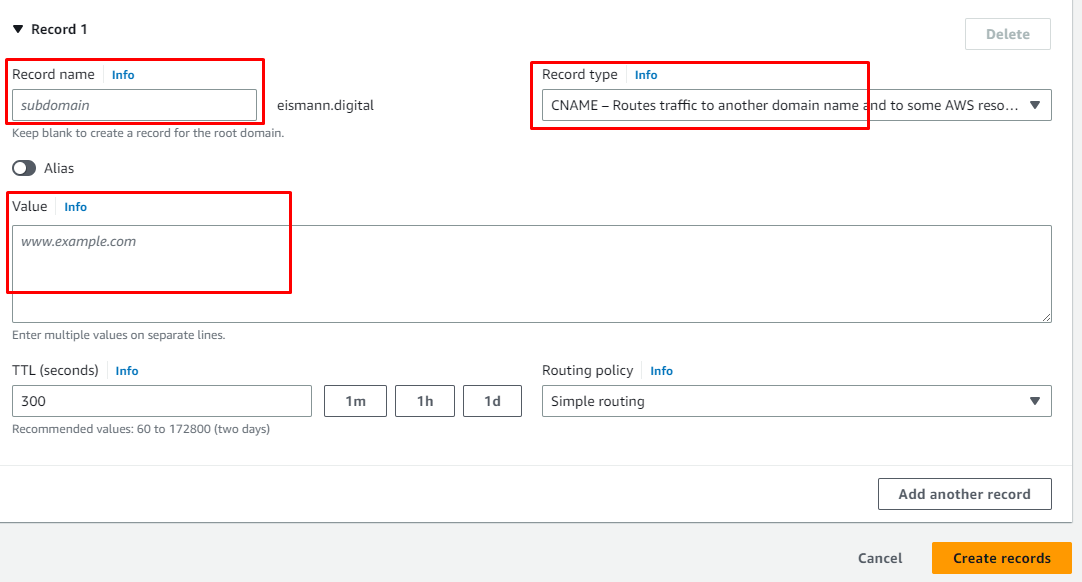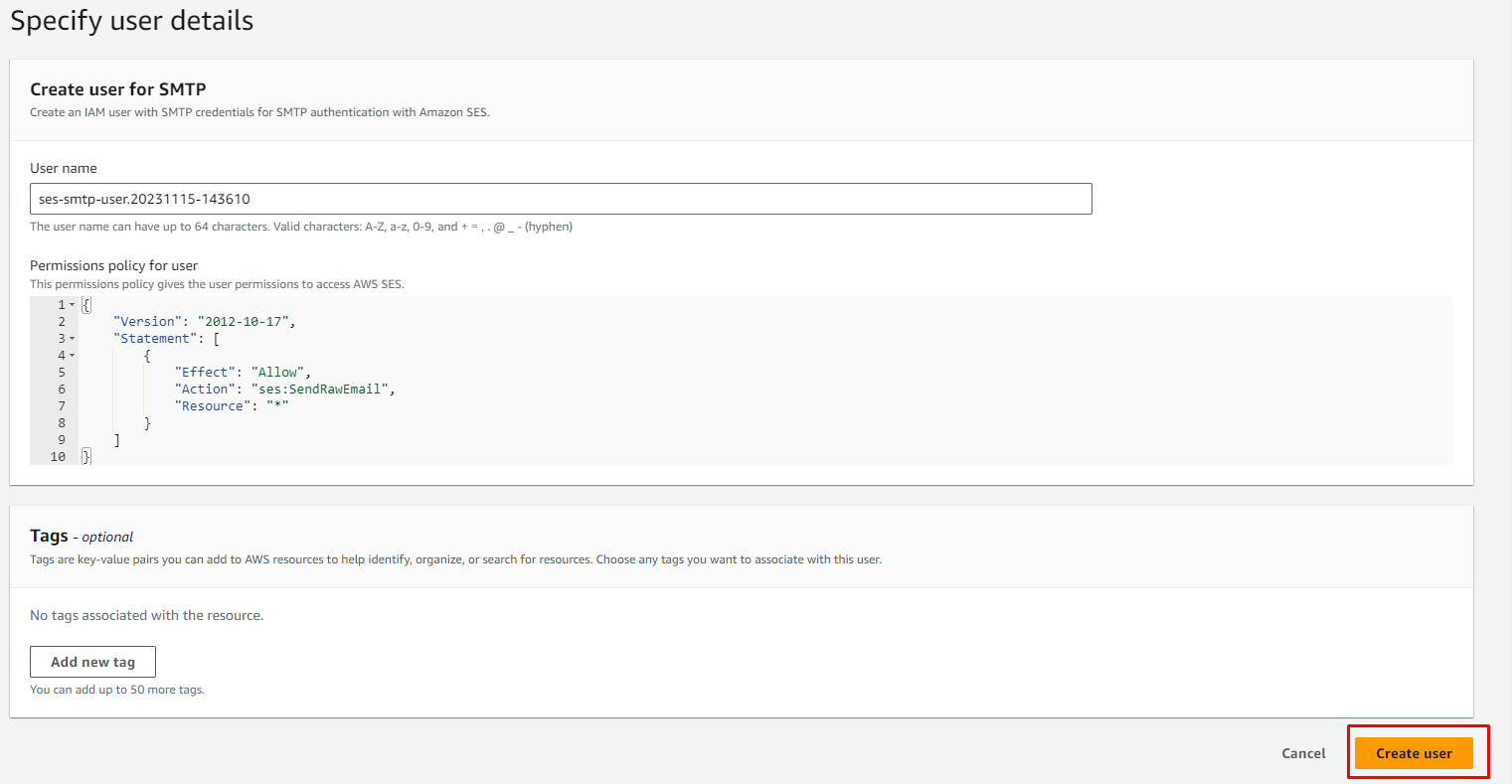AWS / Basics / Simple Email Service
Simple Email Sevice
-
STEPS
1. SES setup
1. go to https://eu-central-1.console.aws.amazon.com/ses/home?region=eu-central-1#/get-set-up
2. create identity

2. Verify Domain and Email
1. Add the DNS records in the Hosting Provider Server (here we use AWS Route 53)
2. go to https://us-east-1.console.aws.amazon.com/route53/v2/hostedzones?region=eu-central-1#ListRecordSets/Z0209881JHOV0P4MRZI6
3. Add DNS



3. SMTP settings



-
CODE
namespace FoodExplorer\ServiceCloud\Models; use FoodExplorer\ServiceCloud\Models\User; use FoodExplorer\ServiceCloud\Models\Credentials; use \PHPMailer\PHPMailer\PHPMailer; use \PHPMailer\PHPMailer\SMTP; class Email { private static $subject = ''; private static $message = ''; private static $toEmail = ''; private static $toEmailLabel = ''; public static function SendVerificationMail($data){ ob_start(); require_once 'src/foodexplorer/servicecloud/Templates/Email/emailVerification.php'; self::$message=ob_get_contents(); ob_clean(); self::$toEmailLabel=$data['firstName']." ".$data['lastName']; self::$toEmail=$data['toEmail']; self::sendEmail(); } public static function sendEmail(){ $ses_data=Credentials::getSesEmailData(); //print_r($ses_data); $ses_data['ses_sender_email']="volker.pischel@eismann.de"; $ses_data['ses_sender_name']="volker"; $ses_data['ses_username']="AKIARZQDBTHSV2IMB4XQ"; $ses_data['ses_password']="BBq/NjwVJjuq2bYU17OqjmenCxtgtlzwPxOqUE5HZ+l2"; $ses_data['ses_host']="email-smtp.eu-central-1.amazonaws.com"; $mail = new \PHPMailer; $mail->isSMTP(); $mail->SMTPDebug = 2; $mail-> SMTPAuth = true; // Replace sender@example.com with your "From" address. // This address must be verified with Amazon SES. $mail->setFrom($ses_data['ses_sender_email'], $ses_data['ses_sender_name']); // Replace recipient@example.com with a "To" address. If your account // is still in the sandbox, this address must be verified. // Also note that you can include several addAddress() lines to send // email to multiple recipients. $mail->addAddress(self::$toEmail, self::$toEmailLabel); //$mail->addBCC("manojvijayanaluva@gmail.com", "Manoj Vijayan"); // Replace smtp_username with your Amazon SES SMTP user name. $mail->Username = $ses_data['ses_username']; // Replace smtp_password with your Amazon SES SMTP password. $mail->Password = $ses_data['ses_password']; // Specify a configuration set. If you do not want to use a configuration // set, comment or remove the next line. //$mail->addCustomHeader('X-SES-CONFIGURATION-SET', 'ConfigSet'); // If you're using Amazon SES in a region other than US West (Oregon), // replace email-smtp.us-west-2.amazonaws.com with the Amazon SES SMTP // endpoint in the appropriate region. $mail->Host = $ses_data['ses_host']; // The subject line of the email $mail->Subject = self::$subject; // The HTML-formatted body of the email $mail->Body =self::$message; // Tells PHPMailer to use SMTP authentication $mail->SMTPAuth = true; // Enable TLS encryption over port 587 $mail->SMTPSecure = 'tls'; $mail->Port = 587; // Tells PHPMailer to send HTML-formatted email $mail->isHTML(true); // The alternative email body; this is only displayed when a recipient // opens the email in a non-HTML email client. The \r\n represents a // line break. $mail->AltBody = self::$message; if(!$mail->send()) { echo "Email not sent. " , $mail->ErrorInfo , PHP_EOL; } else { echo "Email sent!" , PHP_EOL; } } }
 MANVIA BLOG
MANVIA BLOG